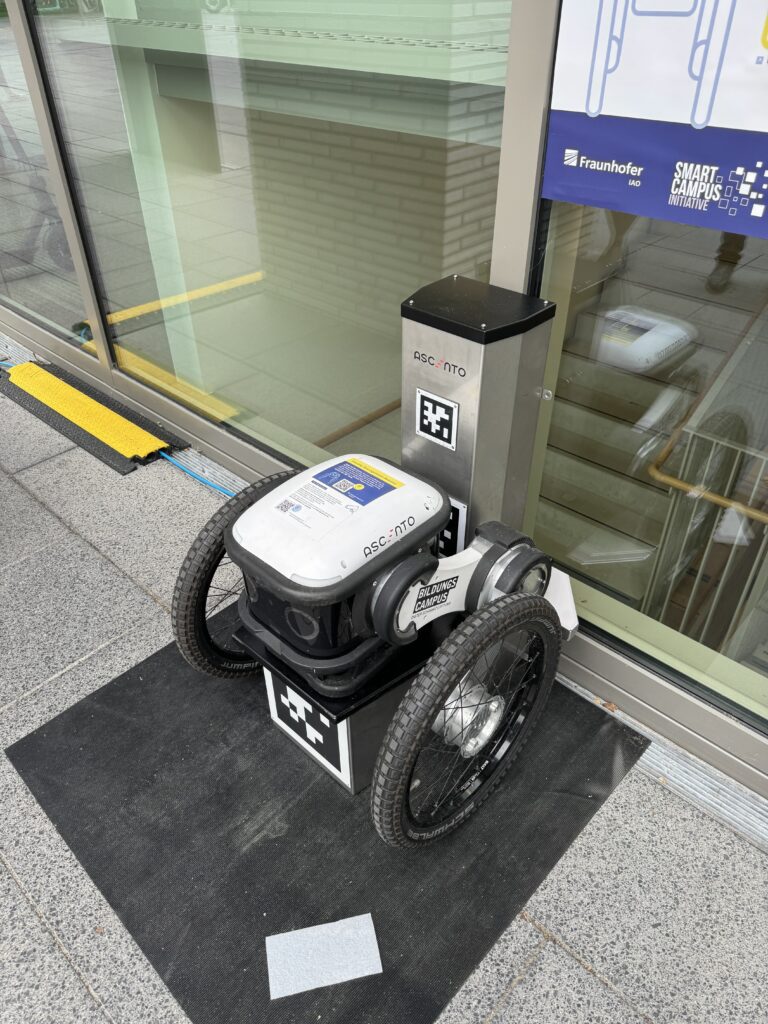Home > Blog > Smart City
As cities around the world embrace digital transformation to become “smart cities,” the need for a robust, scalable, and real-time data infrastructure has never been more critical. At the heart of this transformation lies the concept of event-driven architecture (EDA), with event brokers and event mesh playing a pivotal role in enabling the efficient flow of information across diverse urban systems. In this post I’ll explain how Solace’s event-driven integration and streaming platform serves as the foundation for building smart cities, using as an example the Smart Campus Initiative in Heilbronn, Germany.
Subscribe to Our Blog
Get the latest trends, solutions, and insights into the event-driven future every week.
Thanks for subscribing.
The Smart City Challenge
Smart cities aim to leverage technological advances to implement holistic development concepts that make urban areas more livable, efficient, ecological, and socially inclusive. These concepts encompass social, technical, economic, and societal innovations, and the sheer scale and complexity of urban systems present significant challenges:
- Data silos: Traditional infrastructure often results in isolated data repositories, hindering holistic decision-making.
- Real-time requirements: Many smart city applications demand instantaneous data processing and response.
- Scalability: As cities grow and evolve, their data infrastructure must continuously scale to accommodate increasing demands.
- Interoperability: Diverse systems and technologies must communicate effectively to create a truly integrated urban ecosystem.
Solace is the Ideal Foundation for Smart Cities
As urban centers evolve into smart cities, they require a robust, flexible, and scalable data infrastructure to support their diverse and complex needs. Solace’s event-driven integration platform – Solace Platform – anchored by Solace Event Broker and event mesh functionality, is the ideal foundation for these next-generation urban environments. Here’s why Solace’s solution is uniquely positioned to address the challenges and opportunities presented by smart cities:
- Scalability for Massive Data Flows: Smart cities generate an enormous amount of data from IoT devices, sensors, and systems. Solace’s platform is designed to handle millions of events per second, ensuring easy scalability as cities grow and more devices come online.
- Real-Time, Low-Latency Data Processing: In a smart city, split-second decisions can have significant impacts on public safety, transportation efficiency, and service delivery. Solace’s solution instantly distributes data between various systems as events occur, enabling real-time decision-making. This low-latency processing is essential for applications like traffic management, emergency response, and public transportation optimization.
- Breaking Down Data Silos: Traditional urban infrastructure features isolated data repositories, hindering holistic decision-making. Solace’s solution enables efficient data sharing across disparate systems, fostering a comprehensive view of urban operations.
- Security and Resilience: Smart cities handle sensitive data ranging from personal information to critical infrastructure controls. Solace technology securely transmits data and is resilient to outages. This robust security and reliability are paramount for maintaining public trust and ensuring the continuous operation of city services.
- Edge Computing Capabilities: Many smart city applications, such as predictive maintenance of infrastructure or real-time traffic management, require processing at the edge. Solace’s event mesh functionality enables edge computing so data can be processed close to its source, and then transferred to the core for routing to other systems that process it. This reduces latency and ensures timely responses, critical for applications that can’t afford delays from centralized processing.
- Open Standards and Interoperability: Smart cities rely on a diverse ecosystem of technologies and vendors. Solace’s support for multiple open protocols and APIs ensures smooth integration with existing and future urban technologies. This interoperability is crucial for creating a truly connected and adaptable smart city infrastructure.
By addressing these critical aspects of smart city infrastructure, Solace provides a foundation that is not only capable of meeting the complex, data-intensive requirements of today’s urban environments but is also flexible and scalable enough to accommodate future innovations and growth.
A Real-World Smart City Example
The Smart Campus Initiative in Heilbronn, Germany, serves as an excellent case study for the potential of EDA in smart city development. The educational campus in Heilbronn connects various educational and research institutions in one place, serving as a real-world laboratory for the data-supported development and testing of smart and innovative services and business models.
Let’s explore some of the key use cases being developed and tested on the Smart Campus, all of which benefit from the robust, real-time event distribution capabilities of Solace’s platform:
Facility Management

The event mesh they’ve built with Solace technology allows Loomi to instantly communicate status updates and anomalies to relevant systems and personnel, enabling proactive facility management.
But it’s not just Loomi that’s connected to Solace via MQTT – other systems such as an elevator remote service management system are connected as well. In this example, elevators send events like status updates that enable Loomi to make use of elevators to change between different campus sites in difficult terrain. One goal is to avoid any intervention in public road traffic to assure the highest possible safety, while saving facility management efforts.
Digital Vineyard
Another regional project that is supported by this initiative is called Digital Vinyard. In different agricultural areas surrounding Heilbronn, long-range wide area networks (LoRaWAN) have been established powered by the Things Network. The Things Stack is a LoRaWAN network server that is connected as kind of a gateway via MQTT to the event mesh they’ve built with Solace Platform.
Different sensors that measure things like humidity and temperature, and analyze rain and soil, are pushing readings to the LoRaWAN network server via MQTT. This allows the collection of measurement values and geolocation using LoRa geolocation – a GPS-free solution for low-power wide area networks that use time-difference-of-arrival (TDOA) techniques to determine the approximate location of a device, with an accuracy down to the nearest city block.
A digital twin of different vineyard locations (for now Erlenbach and Gundelsheim) was built so soil condition can be accurately represented in a geo-referenced manner by determining the phosphorus and potassium content, as well as the PH value. The goal is to support winemakers in this region, helping them optimize yield, increase efficiency and produce more cost-effectively. In addition, predictions can be made to optimize pest control, for example by detecting and preventing fungal infestation at an early stage. A next step is to control irrigation which helps to protect the environment.
Smart Metering
The campus is using building automation by Neuberger that represents the future of energy management. It enables the monitoring and control of of heating, cooling and electricity. Connectivity is established via MQTT directly with the event mesh. In the future, energy consumption will be optimized and tenant’s utility bills invoiced in real-time. The business impact is obvious: cost savings, increased sustainability and improved operations. Overall, this increases the attractiveness of the location and represents a competitive advantage.
These three use cases are just the beginning, and demonstrate how Solace’s solution serves as the foundation for building smart cities, enabling real-time data flow, integration of diverse systems, and the ability to scale and adapt as urban needs evolve, powered by IoT and AI trends.
Implementing an Event Mesh for Smart Cities
To realize the full potential of a smart city infrastructure, technical leaders should consider the following steps:
- Assess current data flows: Identify key data sources, systems, and applications that would benefit from real-time, event-driven communication.
- Design the event mesh topology: Plan the deployment of event brokers across your urban infrastructure, considering both centralized and edge locations.
- Define event taxonomies: Develop a standardized approach to event naming and structuring, ensuring consistency across all urban systems.
- Implement security and governance: Leverage Solace’s built-in security features to ensure data privacy and compliance with relevant regulations.
- Start small, scale fast: Begin with pilot projects in specific domains (e.g., traffic management, energy optimization) and expand as you demonstrate value.
Conclusion
As cities continue to evolve and embrace digital transformation, the need for a flexible, scalable, and real-time data infrastructure becomes increasingly apparent. Solace’s event-driven integration platform, with its robust event broker and event mesh capabilities, offers a compelling foundation for building truly smart cities.
By enabling real-time communication between diverse urban systems, Solace empowers cities to break down data silos, respond instantaneously to changing conditions, and scale their infrastructure to meet future demands. As demonstrated by initiatives like the Smart Campus in Heilbronn, the potential applications are vast and transformative.
For technical leaders embarking on smart city projects, considering an event-driven approach powered by Solace could be the key to unlocking the full potential of urban innovation and creating more livable, efficient, and sustainable cities for the future.
The success of the Schwarz Group in using Solace’s technology for their Retail event mesh across hybrid cloud environments demonstrates the platform’s ability to handle large-scale, complex environments – a crucial factor for smart city implementations.
As I’ve illustrated with the Smart Campus Initiative, the future of urban development lies in the intelligent integration of diverse systems and data sources. By leveraging Solace’s event-driven integration and streaming technology, cities can create a responsive, adaptive infrastructure that not only meets the needs of today, but is ready to face the challenges and opportunities of tomorrow.
Explore other posts from category: Smart City

With over 10 years in sales and solution engineering, Alexander helps Solace customers accelerate and derisk their digital transformation journeys to find the solve their technical problems in a way that maximizes business value and outcomes.



Subscribe to Our Blog
Get the latest trends, solutions, and insights into the event-driven future every week.
Thanks for subscribing.
